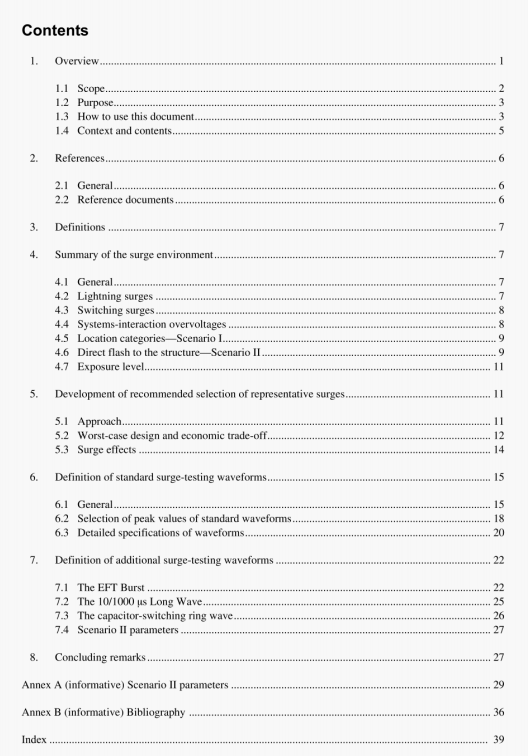IEEE C62.41.2:2002 pdf free download.IEEE Recommended Practice on Characterization of Surges in Low-Voltage (1000 V and Less) AC Power Circuits.
For the first stroke of a natural lightning flash, its parameters have been characterized in IEC 61312-3:2000 [HI6]. The dispersion of the flash current among available paths reflects the relative impedances of these paths, which can vary over a wide range, as discussed in IEEE Std (62.41,1-2002. Numerical simulations (Hirki et al. 1996 [B6]: Mansoor and Martzloff 1998 [B24]) have shown that the waveform of the portion of the stroke current passing through service-entrance SPDs to exit the building is not very different from that of the flash current if the model postulates comparable values of the resistance of the earthing electrodes for all conductors. In the case of a power system with multiple-grounded neutral, the substantially lower resistance offered by the multiple earthing electrodes reduces considerably the portion of the lightning current carried by SPDs involved in the exit path. Therefore, when making a risk analysis. it is very important to consider the grounding practices of the power system.
Subsequent strokes in a flash have lower amplitudes hut steeper fronts. Therefore, they are significant for the mechanism of inducing voltages in circuit loops. Examples of computations for this effect are given in A.2 of IEEE Std C62.41.1-2002. For practical purposes, given the oscillatory response of these circuits to an impulsive stimulus, the 100 kHz Ring Wave maybe considered as representative of the environment for the case of internal circuits exposed to a Scenario II event.
4.7 Exposure level
The description of the database first given in the 1980 version of this document (IEEE Std 587”) included a figure showing the rate of occurrences versus voltage levels at unprotected locations. in support of introducing the concept of exposure levels. In the post-1990 environment, there are very few locations left without the presence of an SPI) somewhere, so that ‘unprotected locations” are scarce. The level of exposure of a particular environment and location category would be better described by a diagram showing the frequency of occurrence of surge currents as a function of their amplitude (or perhaps energy-delivery capability). Unfortunately, available data do not provide that information, and the concept of exposure levels remains qualitative. The 1991 version of this recommended practice attempted to quantify, by a consensus process. the impact of exposure by means of tables where the numerical values for the three location categories were divided into three subcategories. This attempt was deemed cumbersome by some readers. and many specifiers used only the largest value. Consequently, the tables appearing in this recommended practice show only one row of values for Category A and Category B. Because of the width of the transition band connecting Location Category B to Location Category C (spanning over the service equipment). two levels of exposure have been maintained fur Location Category C.
IEEE C62.41.2:2002 pdf free download
